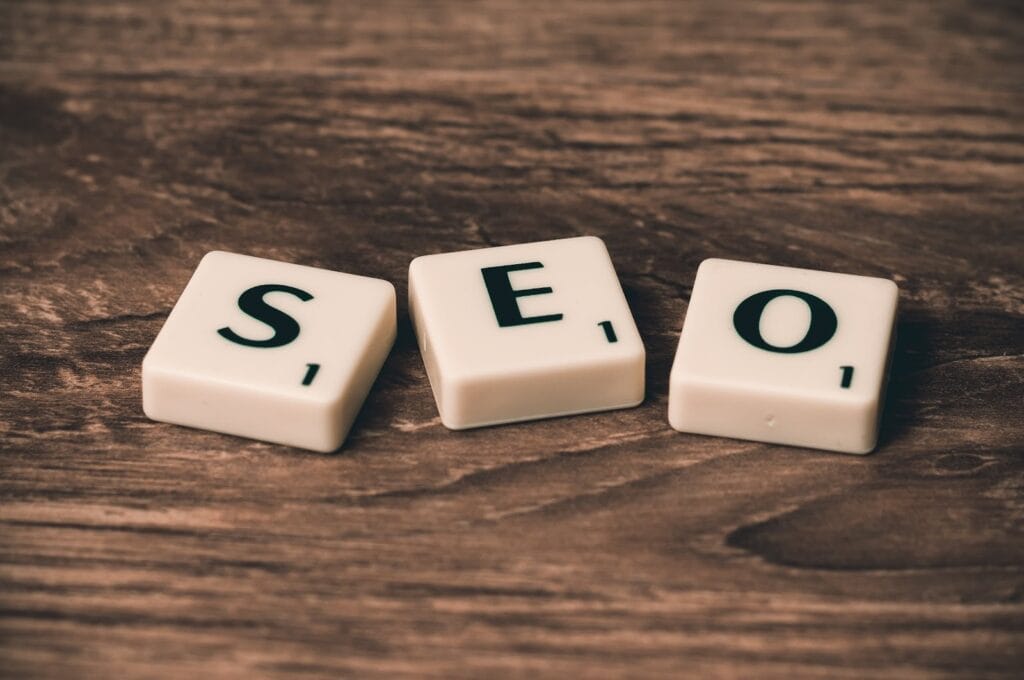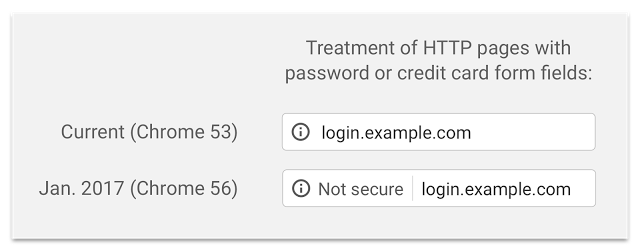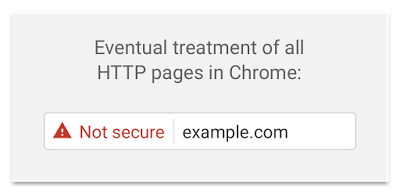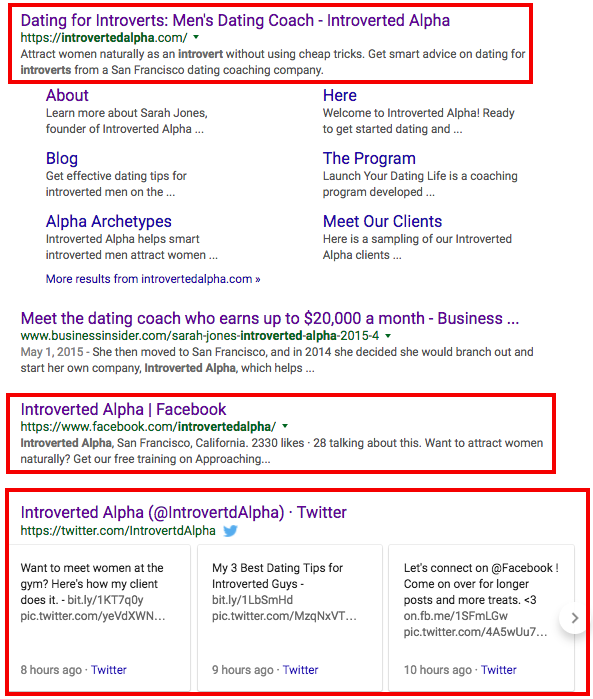SEO Basics for Small Business Owners


If you ran a brick-and-mortar store, how would you grab people’s attention?
Maybe...
- Put up a sign that tells people what you offer
- Stock your shelves with great products to make good on that offer
- Clean up your shop so it was easy to navigate
This is what search engine optimization (SEO) does for your website. SEO makes your website Google-friendly so people can find it, visit it, and enjoy their experience there.
Simple enough, right?
The problem is, Google changes its algorithm so often that it’s tough for small business owners to keep up with the new rules. Especially because most small business owners would rather do a hundred other things before spending time on SEO. After all, unless you’re a marketing nerd, SEO probably seems pretty boring.
But it’s key to getting your business noticed online. A study conducted by online advertising network Chitika found that sites that moved to page two on Google lost nearly 95% of their search traffic.
That’s why we’re breaking down the top five recent SEO updates, and what small business owners need to know about them.
1. Pop-up penalties
Pop-ups used to be the domain of scammy ads telling you that “YOU WON $1 MILLION!!! Claim now!!” But ad blockers helped kill those off, and pop-ups have become a powerful way for small business owners to grow their audience.
Last May, Sumo reported that their users collected 23,645,948 email addresses with their pop-up app in less than two years.
But recently, Google began punishing sites that use pop-ups on mobile, saying that they create a bad user experience: “[Popups] can frustrate users because they are unable to easily access the content that they were expecting when they tapped on the search result.”
If your site has a pop-up that appears when someone visits your site on their phone or tablet, it could lower your search rank.
Here are three types of mobile pop-ups Google will penalize you for:
Image source
- A pop-up that covers the main content either after a user reaches the page or after they start scrolling.
- A pop-up that the user has to dismiss before accessing the main content.
- A layout with a pop-up-like design above the fold that you have to scroll past to get to the main content.
Here are three types of mobile pop-ups that are okay:
Image source
- Pop-ups used for legal reasons, like asking users for age verification and permission to use cookies.
- Pop-ups with logins for private content, like articles behind a paywall.
- Banners that don’t take up the whole screen and are easy to dismiss, like app install banners.
Here’s a good rule of thumb for your business’s website: If your pop-up is purely used for advertising and it prevents users from getting the content quickly, it’s no good on mobile.
2. Mobile first -- and this time Google means it
“Mobilegeddon” first hit in 2015 when Google announced that it was updating its algorithm to favor mobile-friendly sites. Publishers started freaking out, but the change didn’t have a huge effect on traffic.
Now Google means business.
The search engine is officially starting to test its new mobile-first index. When determining your rank, Google will look at your mobile site first and only look at your desktop site when there is no mobile version. So if your site isn’t totally optimized for mobile, your rank will suffer.
Here are five ways to make sure your site is mobile-ready:
- Speed up your loading time, ideally to under two seconds. You can do this by minimizing large images, cleaning up your source code, and eliminating unnecessary redirects.
- Keep titles and descriptions short to help Google scan your page and make reading easier for visitors.
- Use HTML5 or Java instead of Flash.
- Match your mobile content with desktop content. If your desktop site has more content than your mobile site, understand that only the mobile content will be ranked. If there is important information on your desktop site, find a way to include it on your mobile site.
- Make sure your text fits the screen. Don’t make users zoom in and adjust tiny text to consume your content.
If you’re still not sure whether your site is optimized for mobile, run it through Google’s Mobile-Friendly Test. And remember, this isn’t just an annoying Google mandate. More Google searches come through mobile devices than through desktops, so you’ll create better customer experiences.
Want to build a business that enables you to live YOUR Rich Life? Get my FREE guide on finding your first profitable idea.
3. HTTPS instead of HTTP
That “http” in the beginning of your URL makes a difference:
- HTTP = HyperText Transfer Protocol
- HTTPS = HyperText Transfer Protocol Secure
URLs that begin with “https” protect your information from hackers. To keep users safe, Google Chrome will start to show warnings for sites that are not secure -- meaning, sites that use “http.”
This will first roll out for sites that collect passwords or credit card information. And the warning will look like this:
Image source
Eventually, however, this will apply to all sites across the web, with a warning that looks like this:
Image source
If your site has this warning, it will drive up your bounce rate (the % of visitors who leave your site after viewing one page) and lower your search ranking.
To enable HTTPS on your server, check out Google’s set-up guide for developers.
4. Social media profiles affect your rank
Many social networks like Instagram and Snapchat don’t allow their content to be indexed by Google. Their profiles, however, are indexed. So having a strong social presence will boost your SEO and improve your search rank.
This study from cognitiveSEO shows that your site’s rankings in search are directly correlated with how often your content is shared on social.
As Search Engine Land notes, your website and social profiles are often the only online assets you control. You want to do everything you can to help them show up in search results, because you can shape their messaging.
Take Introverted Alpha, Sarah Jones’s dating coaching service for introverted men. When you Google the company, you see several of its owned properties.
You can start improving your social engagement and rank with these simple tips:
- Include social buttons on your website and in company emails.
- Add calls-to-action to share your content on social within the body of your blog posts.
- Use high-quality imagery and video that people would want to share on social. Which brings me to my next point...
5. Rich media is more important than ever
You may be an amazing writer, but if your site is just full of chunks of text, it’s not going to cut it on Google.
As the web gets more image- and video-heavy, Google is penalizing sites without rich media. So if you don’t have images and videos embedded in your site, your rank could drop.
Visuals are also likely to increase the time a user spends on your site. This is important for your rank because Google associates a long time spent on site with a positive user experience. That’s why assets like infographics and videos can be great for SEO.
We apply this to the GrowthLab site: Articles are image-rich, and we also publish video and detailed longform guides that people can take more time to engage with.
Just like all SEO practices, this one results in a more substantial experience for our website visitors.
SEO basics for your small business
If you really care about your audience, these SEO basics should make a lot of sense. They may seem a bit technical at first. But in the end, they’re all about helping people find what they’re looking for.
If they want content that answers a question, don’t hit them with pop-ups; just let them get to reading. If they’re looking to browse on mobile, give them a site that’s easy to navigate. If they’re looking for in-depth advice, break down your tips in a video or graphic.
Yes, SEO will put you in good standing with Google. But it will also put you in good standing with the people who matter most: your customers.
Like this blog post? Learn how to create amazing content like this that attracts and engages your target buyers with our FREE Ultimate Guide To Remarkable Content.